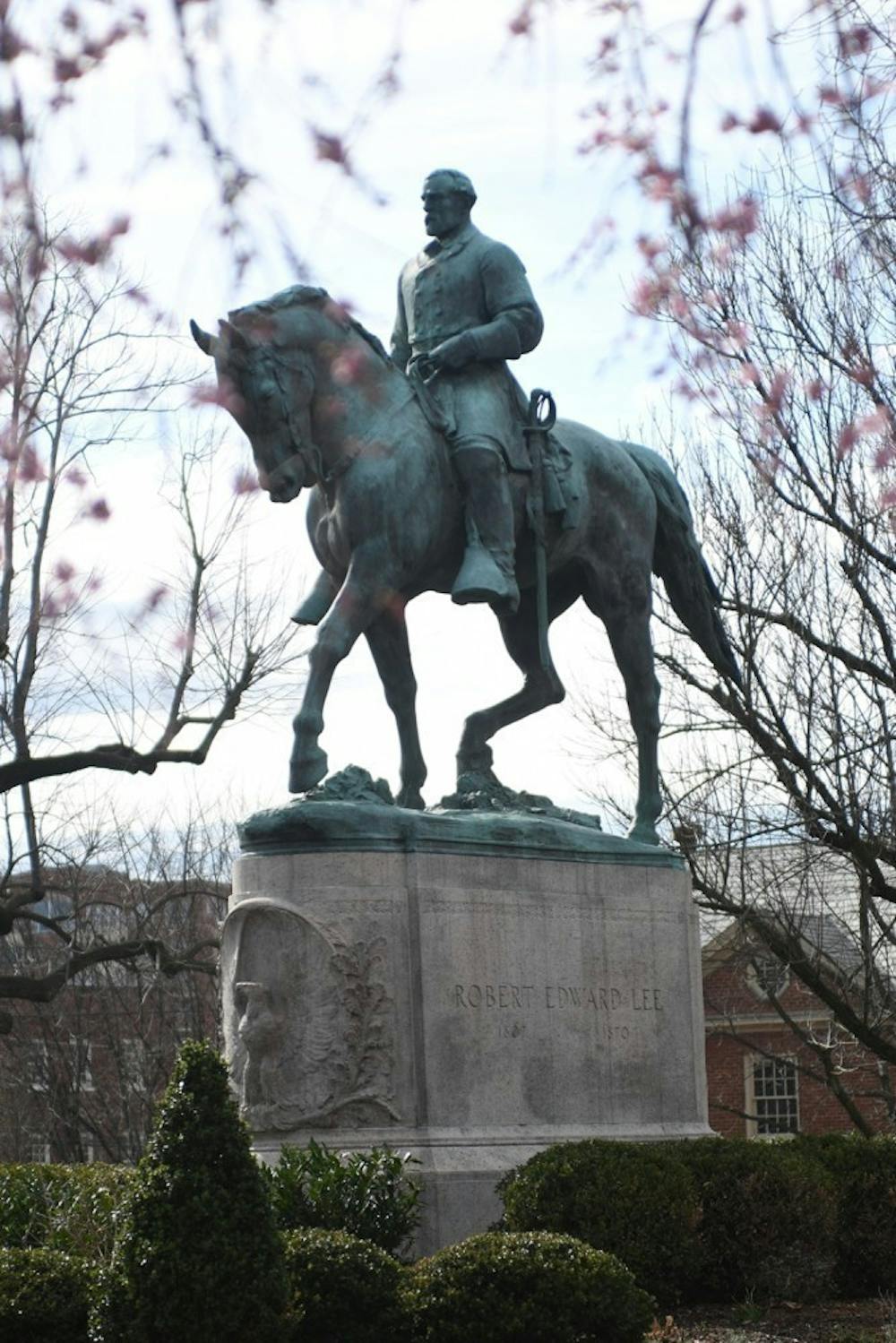Over the past five years, the Charlotteville community has reckoned with the presence of Confederate statues — a conversation that gained traction in 2016 with a petition by then-high school student and current second-year College student Zyahna Bryant and led to a vote by Charlottesville City Council on removing the Lee statue. After opponents of the decision filed lawsuits to contest the vote — saying it violated Virginia state law — this conversation reached an inflection point with the protests from white supremacists Aug. 11-12, 2017. This painful — and even deadly — fight has finally reaped tangible change. In late 2020, the Johnny Reb statue was taken down from outside the Albemarle County Circuit Courthouse, and the Supreme Court of Virginia recently ruled that the Lee and Jackson statues are not protected by the state’s previous ban on removing statues. These decisions are good news — each statue represents a history of racism and fosters continued discrimination today.
Despite awareness of the issue, Grounds is still rife with symbols that either allude or explicitly praise the Confederacy and Lost Cause narrative, the eugenics movement and other manifestations of white supremacy. While the University expressed their intention to take action towards recontextualization and removal processes, little has been done thus far. The University must be more open with students and take more urgent action against these symbols on Grounds.
Indeed the Charlottesville government has taken substantive steps to remove or recontextualize references to the Confederacy and other allusions to white supremacy. Since early 2017, the Charlottesville City Council has been fighting to remove the Stonewall Jackson and Robert E. Lee statues and to rename and recontextualize Lee Park. Unfortunately backlash — especially from the Sons of Confederate Veterans and the Monument Fund — held up progress by instigating four years of courts arguments. Only now has the City finally received permission to remove these statues. The University should similarly take more decisive action against Confederate symbols on Grounds.
Local Charlottesville organizers have called attention towards five statues that they are interested in recontextualizing or removing entirely. On Grounds, the Minority Rights Coalition also called to remove the Frank Hume Memorial Fountain, otherwise known as the Whispering Wall. Students reveal that it is demeaning and disheartening to walk past memorials for individuals that have encouraged oppression of their ancestors. Each memorial perpetuates the University’s deeply racist history and undermines the value of marginalized communities on Grounds.
The issue at hand is oft-delayed by bureaucratic processes of legislative officials and University administration. Nevertheless, local activists like Zyahna Bryant, Anthony Guy Lopez and Don Gathers — just some of the countless individuals who so that the City that no longer celebrates its racist past — keep these conversations alive. Despite staunch efforts, they endure an incredibly slow and often seemingly indifferent response from both local government officials and University administration. The Art Department’s contextualization of the McIntire name and the School of Education’s website on the history of its former namesake similarly puts in the work to address racist references to white supremacist history while waiting for the University to make institutional changes.
Recently, the University announced the creation of a committee that will work to review the names of University institutions and the contextualization and status of memorials on Grounds. However students expressed concern that the University is being dismissive of the larger systemic problem. It is frustrating for many students — particularly those from marginalized communities, whose identities are directly targeted by the existence of these statues and building names — to watch statues come down at schools across the country and still see a lack of concrete action at the University. While the Board of Visitors voted in September to remove the George Rogers Clark statue and contextualize the Thomas Jefferson statue by the Rotunda, no tangible action or changes are yet evident.
That being said, the experience with the Lee and Jackson statues demonstrates that removing and recontextualizing memorials can be a slow process — nevertheless the University must be more open and honest and release their plan and timeline for the removal of these memorials. Additionally, the renaming of Pinn Hall several years ago shows the Board has the power to promptly rename University institutions. The University should consider taking advantage of other, quicker rededication processes for monuments and buildings.
The long judicial processes cannot slow the momentum of the movement. It only proves we must maintain opposition to racist statues. We must listen to local activists and organizations putting in the work to enact real change and push the University and local government to develop detailed plans for removing racist references in our community.
The Cavalier Daily Editorial Board is composed of the Executive Editor, the Editor-in-Chief, the two Opinion Editors, their Senior Associate and an Opinion Columnist. The board can be reached at eb@cavalierdaily.com.





